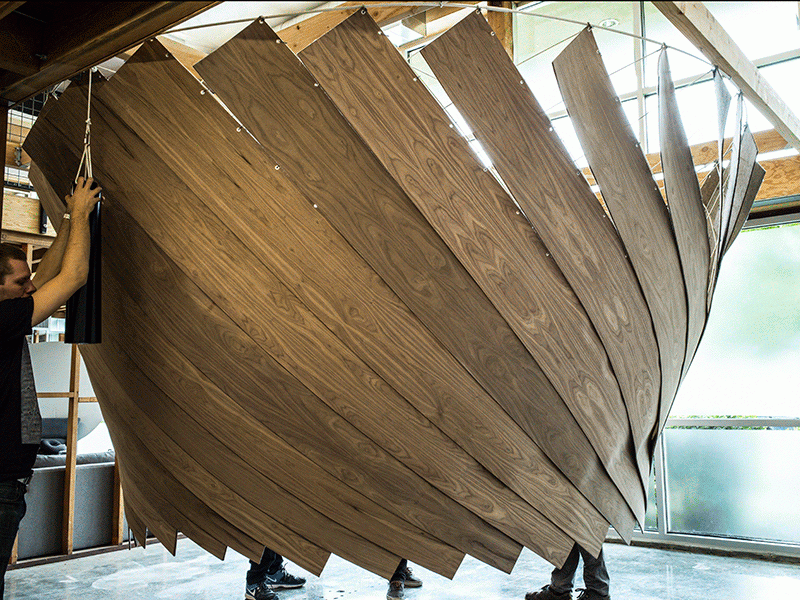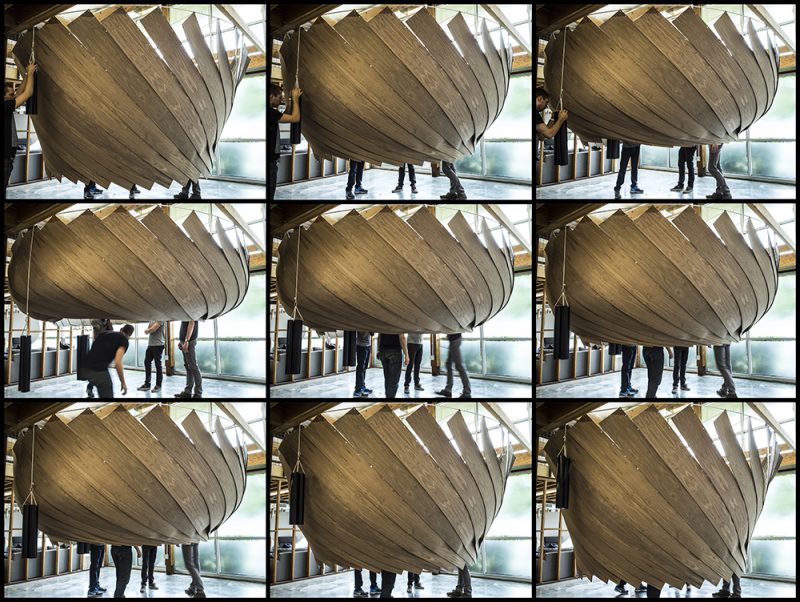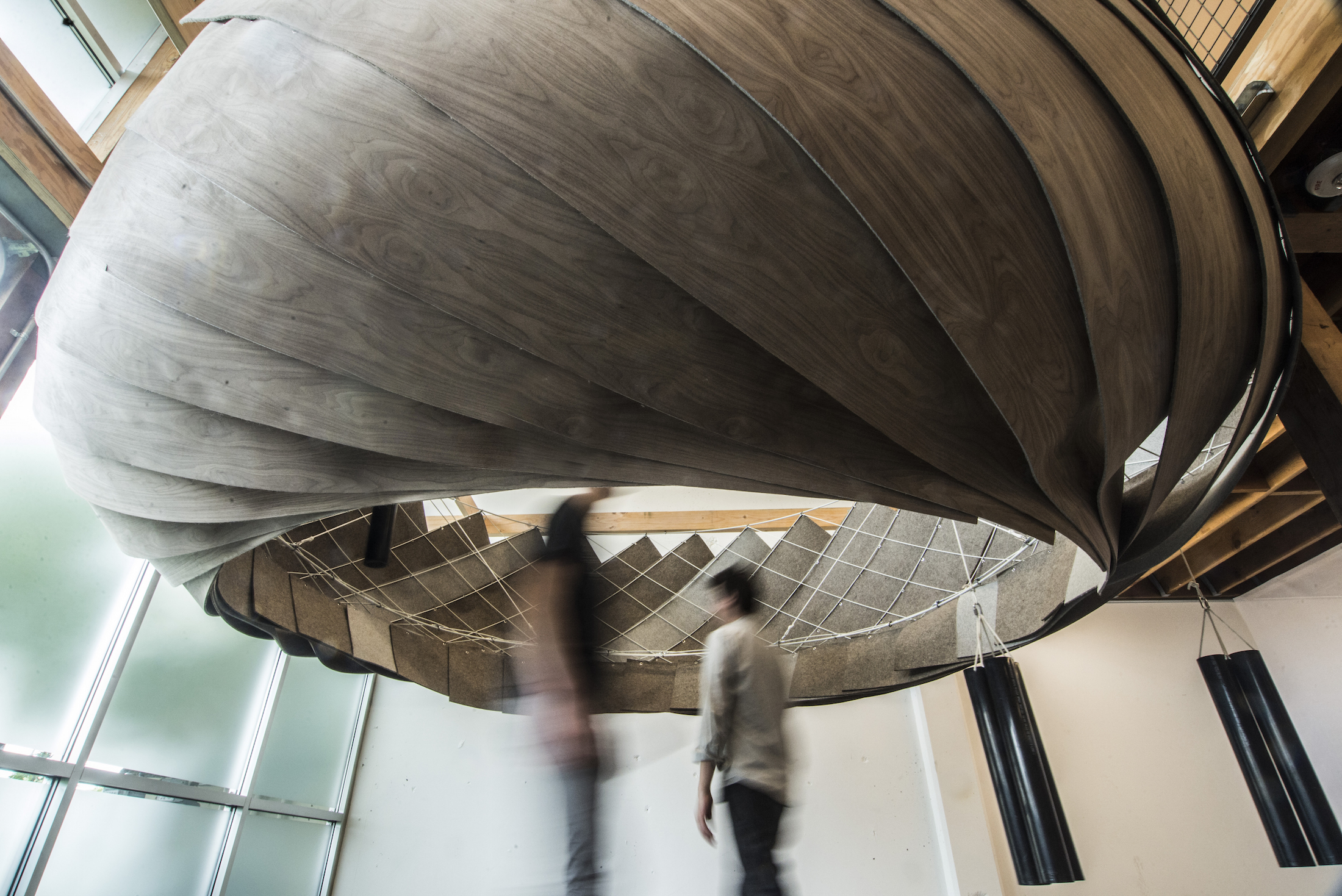Like many companies, Google has opted for an open layout in its Silicon Valley headquarters.
But since there are no cubicles, it can be hard to find a quiet space to get work done or to conduct important phone calls.
To solve this issue, Google consulted MIT to create a giant cubicle, called the Transformable Meeting Space, that comes down from the ceiling. MIT’s team also worked with architect Michelle Kaufmann, who is running the Research and Development Lab for Google and Alphabet’s campus set to open in 2018.
By maneuvering a lightweight pulley, Googlers can make the Transformable Meeting Space wrap around them. Measuring about 10 feet in diameter, it was installed at Google’s San Francisco office in late 2016.

"We were going after the challenge of office environments, where there are totally open spaces. They were trendy, but now there's a bit of a backlash on them," MIT's Skylar Tibbits tells Business Insider. "It's great because you can have privacy in fixed offices; but it's also not great, because you can't have flexibility or different functions."
He's the founder of MIT's Self-Assembly Lab, which created Google's Transformable Meeting Space and experiments with "4D materials" that can transform, adapt, and assemble entirely by themselves.
4D materials aren't robotic. They use natural elements - like changes in temperature, pressure, and moisture - to transform or even repair themselves.

Tibbits compares the Transformable Meeting Space to a Chinese finger trap because of the way that it morphs. The counter-weights help change the shape of the structure, which is made primarily of braided fiber glass and partially blocks outside noise.
Its frame changes shape like a puppet, just by pulling a few ropes.
MIT's Self-Assembly team is working on all kinds of similar projects. It has also built a system for cell phone parts that can self-assemble, orthodontic braces that can automatically move teeth, and an Ikea-style table that can build itself in a few seconds. The Lab collaborates with companies from various industries, including medicine, aerospace, and automotive, to create these systems.
Tibbits sees them as cost-effective alternatives to traditional robotics.
"Today, if companies want to make something smart, they tend to just turn it into a robot," he says. "The problem is that costs a lot, it fails often, it adds assembly time, and complexity."
These materials could make manufacturing more efficient in coming years, especially in consumer electronics. In the case of the self-building cell phone, the device's magnetic parts bounce around in a tumbler. Almost like magic, the pieces find each other to form the cell phone without human intervention.
Google's Transformable Meeting Space was one of the more mechanical prototypes the team has designed.
"It doesn't need temperature or moisture or sunlight to activate it, but it geometrically transforms," Tibbits says.
Check it out in action below:











